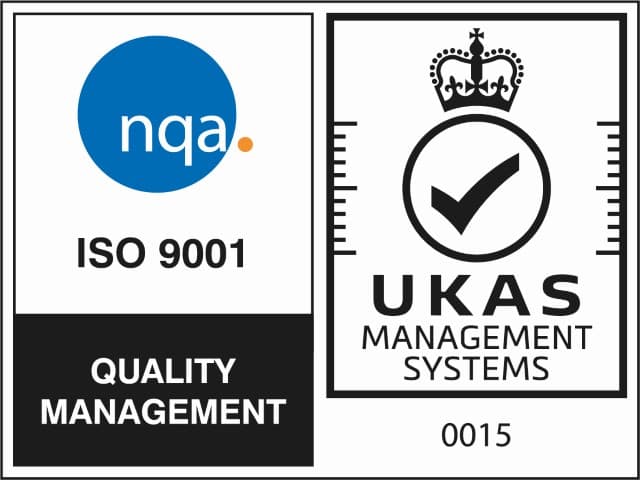As Construction Professionals it is our moral and professional duty to address the issue of Health and Safety with a view to significantly reducing the number of fatalities, serious injuries and other related illnesses and diseases occurring within our industry. Each year the construction industry is responsible for a significant number of the fatalities and serious injuries which occur in Britain, with the 2008/2009 HSE figures reporting fifty-three fatalities at a rate of 2.4 fatalities per 100,000 workers (HSE, 2009), six times the average rate across our nation’s workforce. Although these figures compare favourably with previous years, an average of 3.4 deaths per 100,000 (HSE, 2009) workers for 5 previous years, there is still a lot of work to be done in ensuring the safety and well being of the 2.2 million people employed in the construction sector in today.
The Health and Safety Executive (HSE) is responsible for the enforcement of health, safety and welfare in the workplace. To aid in the creation of a safe working environment the HSE has produced several legislative documents which set out the minimum acceptable standards of health, safety and welfare in Britain. The HSE regulations affecting the construction industry are the Health and Safety at Work Act and the Construction (Design and Management) Regulations 2007.
The Health and Safety at Work Act is applicable to all employers, employees and self-employed in their place of work. The Act details the legal rights and responsibilities of all those in the workplace and presents large fines and penalties for violations of the health and safety legislation. The act dictates that it is an employer’s duty to ensure the health, safety and welfare of their employees at work as far as is reasonably practicable. This requires employers to, amongst other things, provide and maintain a safe workplace, ensure all equipment is safe and in good working condition, provide health and safety training to employees, provide all necessary safety equipment to employees, appoint a competent individual as Safety Officer and ensure that proper welfare facilities are available to all workers.
Section 13 of the Act sets out the responsibilities of the employee in the workplace, including to undergo any reasonable medical or other assessment requested by the employer, not to endanger themselves or others due to improper behaviour, not to enter the workplace whilst under the influence of drugs or alcohol and to report to the employer any equipment or defects which may pose a danger to health and safety. If the employee’s are found to be negligent in these areas they can face penalties, legal action and dismissal.
The Construction (Design and Management) Regulations (CDM 2007) regulations are specific to the construction industry and are designed to supplement the Health and Safety at work act. The CDM 2007 is divided into five parts dealing with, the application of the regulations and definitions, general duties which apply to all construction projects, this includes duties specific to clients, designers and contractors, contains further duties that only apply to notifiable construction projects, i.e. projects which will last longer than 30 days or involving more than 500 person days of construction work, practical requirements applying to all sites as well as specific requirements for areas such as demolition, vehicle movements and emergency procedures, contains the transitional arrangements and revocations.
This legislation provides the bare minimum legal standard acceptable on construction projects in Britain. However in an increasingly health and safety conscious world many contractors actively trade on their Health and Safety records and are enforcing higher levels of health and safety on their sites.
The enforcement of this legislation and additional emphasis on health and safety has seen a continual reduction in the number of fatalities and serious injuries recorded on Britain’s construction sites in the last number of years. Statistics released by the Health and Safety Executive record a 36% (HSE, 2006) reduction in the number of fatalities between 1999/2000 and 2005/2006 as well as a 22% (HSE, 2006) reduction in major injuries over the same period.
However, while an overview of these statistics point at an industry making strides in the right direction, a breakdown of serious injuries shows that improvement is not happening across the board.
As the above HSE chart shows there has been an increase in the number of major injuries caused by “slips, trips or falls on the same level”(HSE, 2006) and people “injured while handling, lifting or carrying”(HSE, 2006) during the period 1996/97-2005/06.
Slips, trips and falls are inevitable on any construction site however instances of these can be minimised with the implementation of several basic steps. Toolbox talks offer a moment to address all staff and remind them of the importance of good housekeeping not only to their safety but also the safety of their co-workers. In addition to this, forward planning can prevent a high proportion of these incidents, e.g. providing sufficient lighting on darkened areas of site and enforcing the policies related to wearing a hi vis vest and other safety gear at all times.
The rise in workers injured has also risen and is equally serious with back and spinal injuries a common by-product of poor lifting technique and overloading. These injuries can have severe debilitating effects on the lives of workers and result in a long lay-off from work. There is no simple solution to this problem however incidents could be greatly reduced with the introduction of safe lifting limits and by ensuring everyone involved has completed the CSCS course in Manual Handling. This course teaches the basic rules to follow for a safe lifting technique.
In addition to bucking the rising trend for these injuries the industry needs to remain focussed on continuing to reduce the number of injuries occurring across the board. Further to the legislation put in place by the HSE many companies have implemented and enforce in-house safety schemes with the intention of reducing their own accident rate. Jacobs Engineering’s Beyond Zero campaign shows how this can work and be successful in practice. Beyond Zero encourages workers to engage in a “Culture of Caring” (Jacobs, 2009) whereby everyone takes an active role in ensuring safety in the workplace. This is achieved through frequent safety briefings and training, local health and safety committees and by encouraging engineers to consider construction workers when designing their projects. This is an important point and is detailed in the CDM 2007, however in practice projected cost and time are often the decisive factors in design and health and safety can be a secondary concern. Other safety procedures, above those required, which have been implemented across the sector in Britain include, requiring employees to hold a valid CSCS card. These cards are a proof of occupational competence and are available in a wide range of occupations. These cards may only be gained upon completion of a relevant health and safety test, e.g. “Working at Heights” or “Manual Handling”. Many firms have additional Personal Protective Equipment (PPE) requirements: For example; Gloves, Safety Goggles, Ear Plugs. Many contractors take time out at the start of the working day to hold Tool Box Talks: These short talks address a specific area of Health and Safety e.g. working in confined spaces and many examples can be found online. With an increase observed in slips, trips and falls additional emphasis is placed on housekeeping and the safe storage or removal of unnecessary materials. It is imperative that the UK government increase the pressure on companies and individuals to deliver safer solutions to construction projects going forward and reward those whose health and safety innovations drive change within the sector.
It is also not enough for the HSE to concentrate on the major players of the construction industry in the hope that the rest of the sector will follow suit. A study by The Centre for Corporate Accountability for the trade union UCATT in 2007/2008 revealed that over half of construction worker fatalities occurred while working for companies with less than 50 employees and half of these deaths for companies of 5 or less (UCATT, 2008). These companies often work on sites where a full time health and safety is not legally required and as a result safety standards are often not up to the minimum standard called for in HSE legislation. Although spot checks are carried out on these sites and penalties for non compliance are handed out, the regularity of these checks and severity of penalties is not sufficient to discourage many instances of bad practice. Responsibility for this must fall at the feet of not just the directors of these companies but also their workers and the HSE. Safety is everyone’s concern and the British government must ensure that these workers receive the correct health and safety awareness training and that all construction sites within Britain are safe for all workers.











